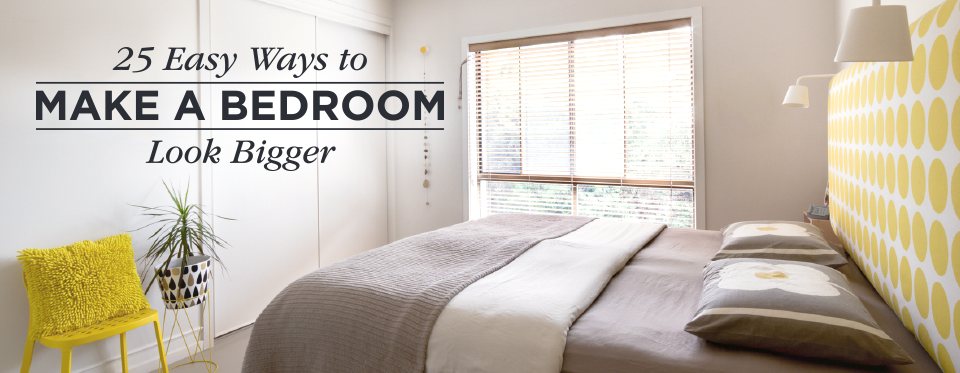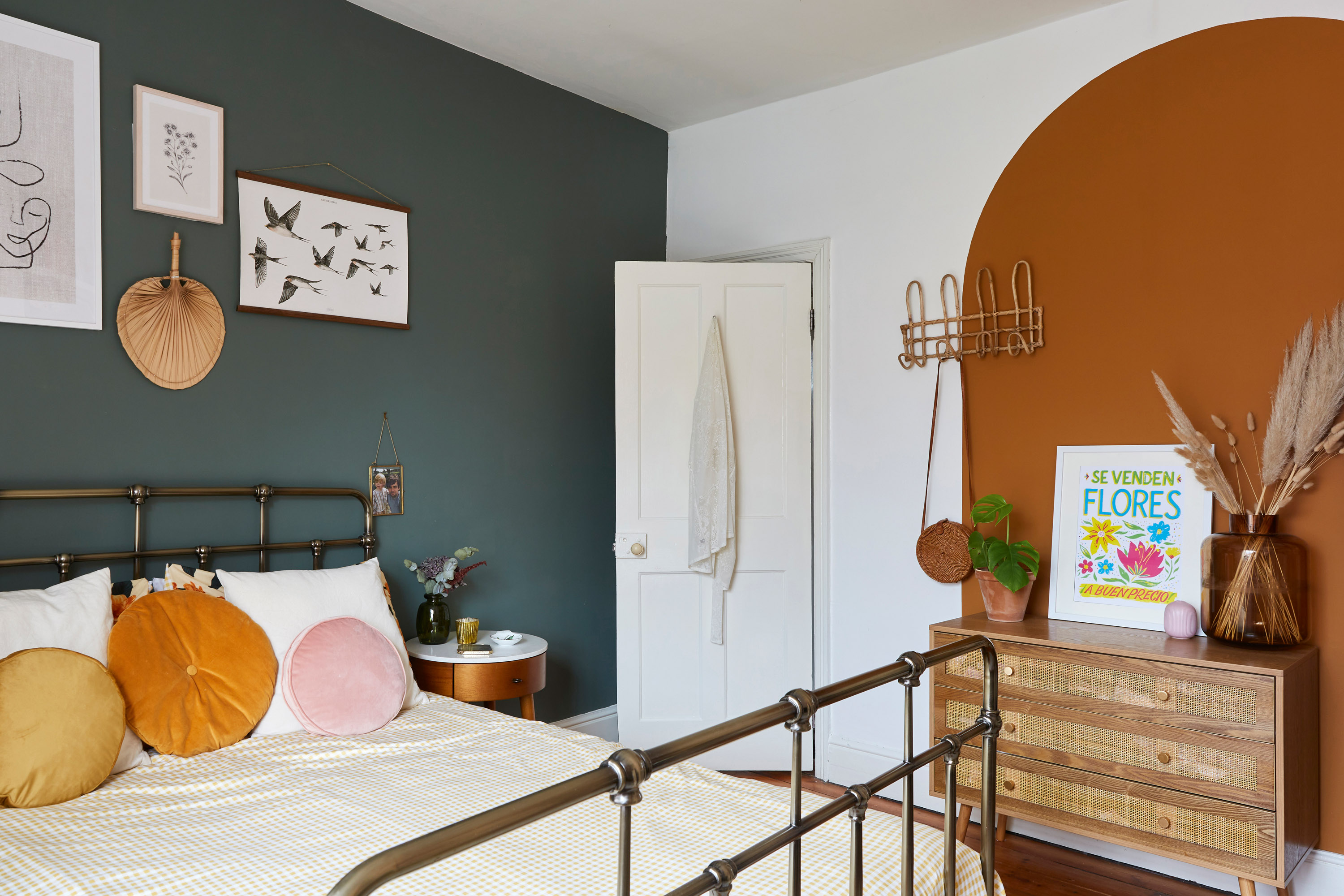Maximizing Space: Hacks For Small Bedrooms

A small bedroom can feel cramped and cluttered, but with some clever design strategies, you can maximize space and create a functional and inviting haven. By incorporating space-saving furniture, implementing efficient storage solutions, and employing strategic layout techniques, you can transform your small bedroom into a comfortable and organized sanctuary.
Space-Saving Furniture Options
Space-saving furniture is essential for maximizing space in small bedrooms. These pieces offer multiple functions, allowing you to optimize every inch of your room.
- Murphy Beds: Murphy beds are a popular choice for small bedrooms, as they fold away into a wall unit, freeing up floor space during the day. They often include built-in storage, further maximizing space.
- Loft Beds: Loft beds elevate the sleeping area, creating space underneath for a desk, storage, or even a seating area. This configuration is ideal for maximizing vertical space and creating a multi-functional bedroom.
- Storage Ottomans: Ottomans provide seating while doubling as storage containers. They can be used to store blankets, pillows, or other items, keeping them organized and out of sight.
- Folding Tables: Folding tables can serve as a desk or a dining table when needed, and fold away easily for storage when not in use.
- Multi-Functional Furniture: Look for furniture pieces that combine multiple functions, such as a bed with built-in drawers, a desk with shelves, or a sofa bed.
Decluttering and Organizing Small Bedrooms
Decluttering and organizing are crucial for maximizing space in small bedrooms. By getting rid of unnecessary items and implementing efficient storage solutions, you can create a more spacious and organized environment.
- Purge Unnecessary Items: Regularly assess your belongings and donate, sell, or discard items you no longer use or need. This will free up valuable space and reduce clutter.
- Vertical Storage Solutions: Utilize vertical space by incorporating shelves, wall-mounted organizers, and hanging storage solutions. This maximizes storage capacity without taking up valuable floor space.
- Under-Bed Storage: Utilize the space under your bed for storage by using under-bed storage bins, drawers, or platforms with built-in storage.
- Wall-Mounted Mirrors: Mirrors create the illusion of more space by reflecting light and making the room appear larger.
Sample Small Bedroom Layout
- Center the Bed: Place the bed in the center of the room, allowing for easy access from all sides. This creates a sense of openness and balance.
- Utilize Wall Space: Utilize wall space for storage and décor, minimizing the need for bulky furniture. Install shelves, mirrors, and artwork to create a visually appealing and functional space.
- Create a Focal Point: Create a focal point in the room, such as a stylish headboard or a decorative accent wall. This draws the eye to a specific area, making the room feel more spacious and inviting.
Creating an Illusion of Space

In small bedrooms, maximizing space is crucial, but creating an illusion of spaciousness can be just as important. Strategic use of color, light, and design elements can make a small room feel larger and more inviting.
Color and Light, Hacks for small bedrooms
Color plays a significant role in shaping the perception of space. Light colors, particularly cool tones like blues and greens, reflect light and create a sense of expansiveness. Conversely, darker colors can make a room feel smaller and more enclosed.
- Light Walls: Painting walls in light colors like white, pale blue, or soft gray can visually enlarge the space. These colors reflect light, making the room feel brighter and more open.
- Light Furniture: Choosing furniture in light colors, such as white, cream, or light wood tones, complements light walls and further enhances the illusion of spaciousness.
- Strategic Use of Accents: Introduce pops of color through accessories, artwork, or throw pillows to add visual interest without overwhelming the space.
Mirrors
Mirrors are powerful tools for creating the illusion of space. They reflect light and images, making a room appear larger and brighter.
- Large Mirrors: Placing a large mirror on a wall, especially opposite a window, can reflect natural light and create a sense of depth.
- Mirrored Furniture: Consider using furniture with mirrored surfaces, such as a mirrored dresser or a mirrored nightstand. These pieces can amplify light and make the room feel more expansive.
- Mirrored Panels: Mirrored panels can be incorporated into walls or doors, creating a visual illusion of additional space.
Patterns and Textures
Patterns and textures can also contribute to the perception of space.
- Vertical Patterns: Vertical stripes or patterns on walls, curtains, or bedding can create a sense of height and make the room feel taller.
- Small-Scale Patterns: Small-scale patterns, such as subtle floral prints or geometric designs, can visually expand a space. Avoid large-scale patterns that can make a room feel cluttered.
- Textured Surfaces: Incorporating textured surfaces, such as a textured wallpaper or a woven rug, can add depth and dimension to a small room.
Smart Design Choices

Hacks for small bedrooms – Beyond maximizing space and creating the illusion of spaciousness, smart design choices play a crucial role in transforming a small bedroom into a functional and aesthetically pleasing haven. These choices involve strategically incorporating storage solutions, selecting furniture that optimizes space, and ensuring adequate and appropriate lighting.
Incorporating Smart Storage Solutions
Maximizing storage in a small bedroom is paramount. This involves incorporating innovative and space-saving solutions that utilize every nook and cranny.
- Under-bed Storage: Utilizing the space beneath the bed is a classic space-saving tactic. Consider using under-bed storage containers or drawers for storing seasonal clothing, bedding, or other items not frequently used. Many bed frames come with built-in storage compartments, eliminating the need for additional furniture.
- Built-in Shelves: Built-in shelves, particularly those extending from floor to ceiling, provide an efficient and visually appealing way to store books, decorative items, and other belongings. These shelves can be customized to fit the specific dimensions of the bedroom, making the most of available wall space.
- Vertical Storage: Vertical storage solutions, such as tall bookshelves, cabinets, and storage towers, maximize vertical space and minimize floor clutter. This approach is particularly beneficial for small bedrooms where floor space is limited.
- Multi-Functional Furniture: Multi-functional furniture, such as a bed with built-in drawers, a desk with a fold-down bed, or a storage ottoman, serves multiple purposes, maximizing space and reducing the need for additional pieces.
Choosing the Right Bed Size and Furniture
The choice of bed size and furniture significantly influences the overall feel and functionality of a small bedroom. Selecting the right pieces ensures both comfort and practicality.
- Bed Size: While a king-size bed may be tempting, it often consumes too much space in a small bedroom. A full or queen-size bed provides ample sleeping space while leaving room for other furniture and movement. Consider a platform bed, which eliminates the need for a bulky box spring and can often incorporate storage solutions.
- Furniture Size: Opt for furniture that is proportionate to the size of the room. Avoid oversized dressers, nightstands, or chairs that overwhelm the space.
- Furniture Style: Choose furniture with clean lines and simple designs. This minimizes visual clutter and creates a sense of openness.
Choosing the Right Lighting
Appropriate lighting is crucial in a small bedroom, as it can significantly impact the overall ambiance and functionality of the space.
- Layered Lighting: Layered lighting, combining different types of light sources, creates a balanced and versatile lighting scheme.
- Ambient Lighting: Ambient lighting, typically provided by overhead fixtures, provides general illumination for the entire room.
- Task Lighting: Task lighting, such as desk lamps or bedside lamps, provides focused light for specific activities like reading or working.
- Accent Lighting: Accent lighting, often achieved with spotlights or sconces, highlights specific features or artwork, adding depth and visual interest.
Small bedrooms demand clever solutions, and maximizing every inch is key. A white corner bedroom desk is a brilliant choice, seamlessly blending functionality with a space-saving design. By utilizing a corner, you free up valuable floor space for other necessities, while still providing a dedicated workspace.
This is just one example of how strategic furniture choices can transform a small bedroom into a haven of efficiency and style.
Hacks for small bedrooms are all about maximizing space and functionality. You need to be strategic with furniture placement, utilizing vertical space, and embracing multi-purpose pieces. When it comes to your master bedroom, organization is key. A well-organized space will feel larger and more inviting.
For inspiration on how to make the most of your master bedroom, check out this guide on organizing a small master bedroom. The tips and tricks you’ll find there can be easily adapted to any small bedroom, so don’t be afraid to get creative and find what works best for you.
